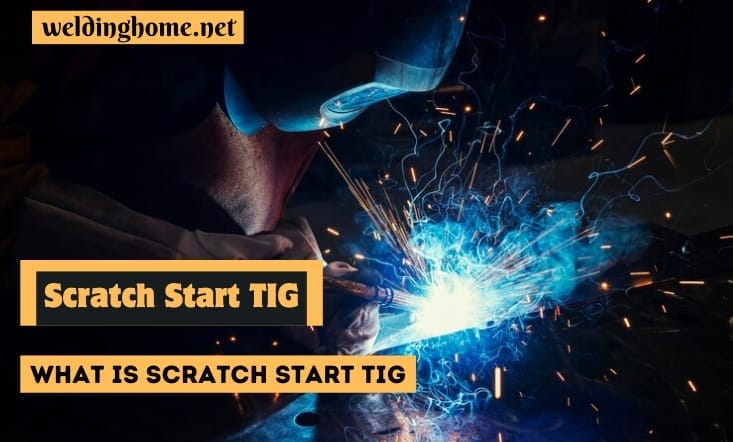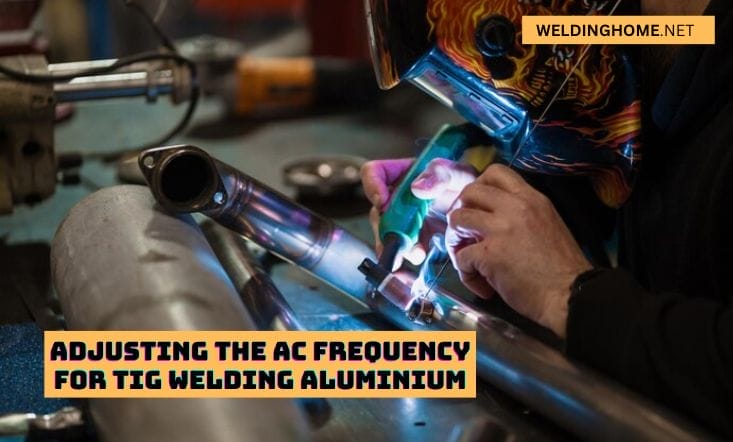Can You TIG Weld Aluminum with DC? Indepth Guide 2023

Introduction
Can You TIG Weld Aluminum with DC? In-depth Guide 2023 TIG welding, also known as Gas Tungsten Arc Welding (GTAW), is a versatile and widely used welding process known for its precision and control. Among other materials, welding aluminum is a typical application. However, there is often a question of whether TIG welding aluminum can be done using direct current (DC) instead of alternating current (AC).
I’ll examine the viability and factors to consider when TIG welding aluminum with DC electricity in this article. you can learn more about TIG welding with direct current. You can also find out why direct current is used in TIG Welding Aluminum. Learn more about What kind of aluminum is appropriate for DC TIG welding. Along with this, some important questions have been answered.
To better understand TIG Weld Aluminum with DC.
Direct current (DC) tungsten inert gas (TIG) welding has many advantages when welding aluminum. Better welding arc control made possible by DC leads to increased stability and precise heat input. It guarantees increased penetration, more durable welds, and less heat distortion. Furthermore, DC TIG welding results in cleaner welds with less spatter. These benefits make DC TIG welding the go-to technique for fabricating aluminum, producing results of the highest caliber.
Advantages and Challenges of TIG Welding Aluminum with DC

Using direct current (DC) for TIG Weld Aluminum with DC offers some advantages over AC. These include improved arc stability, better penetration, less spatter, and faster travel speeds. DC also provides a more consistent heat input than AC, resulting in higher-quality welds and improved weld strength.
One of the main challenges when TIG Weld Aluminum with DC is controlling the heat input. This can be difficult due to the nature of DC current, as it tends to create a larger molten pool compared to AC. This can lead to excessive distortion or warping of the metal if not controlled properly. In addition, overheating can cause porosity in the weld, resulting in a weaker joint.
Welding Aluminum with DC

Typically, TIG welding aluminum is done using AC power, which alternates the direction of the current flow. AC welding helps to prevent the buildup of oxides on the surface of the aluminum, which is crucial for achieving high-quality welds. The alternating current allows for the cleaning action of the positive half-cycle and the heat input of the negative half-cycle.
However, it is possible to TIG Weld Aluminum with DC power, although it presents certain challenges. When using DC, the electrode becomes either positively or negatively charged. Welding aluminum with DC electrode positive (DCEP) is more commonly practiced. In DCEP, the electrode is positively charged, causing the arc to focus more on the tungsten, resulting in a narrower and deeper weld bead.
Common issues when using DC for TIG-welded
Aluminum includes too much heat input, which can lead to distortion and porosity. In addition, DC welding may not provide the same cleaning action as AC welding.
To achieve successful welding of TIG Weld Aluminum with DC power, it is crucial to have prior experience. Without experience, aluminum can melt very rapidly. Nonetheless, there are specific benefits of using direct current for TIG Weld Aluminum with DC, which are explained below.
Penetrates Deeply Into The Joint:
DC TIG welding is capable of deep penetration in joints, which makes it a suitable option for creating strong joints. On the other hand, AC TIG welding cannot achieve the same level of deep penetration.
Weld In Thicker Metal :
Aluminum pieces are thicker than 0.25 inches but can be welded well by DC welding. But high-thickness metal cannot be welded well by AC. A portion of aluminum over 0.25 inches thick by AC can cause gaps inside.
The Hole Is Simple To Fill:
You can easily fill a deep hole caused by aluminum welding using DC. Once the hole is filled, the workpiece should be smoothed with a grinder to restore its original appearance.
Make sure that you prepare the joints correctly

Prior to welding, it is essential to thoroughly clean the metal surface to get rid of any impurities. Preheating the metal, if possible, can also help to reduce distortion or warping during the welding process.
It is possible to perform welding in one direction.
When TIG Weld Aluminum with DC, It is feasible to only do one direction of welding. and avoid having to go back and forth. This helps to reduce the chances of misalignment or distortion in the welded joint.
Reduced Spatter:
DC TIG welding produces less spatter than AC, resulting in a much cleaner weld. This is because the arc focuses more on the tungsten electrode and not on the filler material.
Faster Travel Speeds:
DC TIG welding can achieve faster travel speeds than AC due to its deeper penetration and narrower weld bead. This results in a faster welding cycle and a less time-consuming process for the welder.
Set Appropriate Amperage:
It is essential to set an appropriate amperage when TIG Weld Aluminum with DC. Too low of an amperage will lead to inadequate heat input and weak welds, while too high of an amperage can cause excessive heat input and warping.
Fast Fusing:
This technique has the advantage of being rapid to weld in an emergency situation. No other method of quick welding is available. To complete your welding more quickly, you can use DC for TIG welding.
Tips for Successful TIG Welding of Aluminum with DC
When TIG Weld Aluminum with DC, it is important to maintain proper weld settings and techniques in order to achieve quality results. Here are some tips for ensuring successful welds:
- Use the lowest possible amperage setting that still produces a stable arc.
- Use the correct type and size of filler rod for the job.
- Use a shorter arc length (no more than 1/8 inch).
- When possible, preheat the workpiece prior to welding.
- Keep the tungsten electrode sharp and free from contamination.
Common Mistakes to Avoid
- When TIG Weld Aluminum with DC, there are some common mistakes that can lead to poor welds.
- Using too high of an amperage setting;
- Not using the correct filler rod for the job;
- Allowing the arc length to become too long;
- Not preheating the workpiece prior to welding;
- Failing to keep the tungsten electrode sharp and clean.
Conclusion
TIG welding is a precise method that finds application in several fields. It is commonly used to weld aluminum, where AC power is preferred for its ability to clean the metal. Nevertheless, there may be specific situations where DC power can also be used. To achieve good aluminum welds using TIG Weld Aluminum with DC, it’s important to use the right polarity and follow proper cleaning and preparation techniques.
EAQ’S
Do you TIG Weld Aluminum with DC or AC?
AC
DC is used for TIG welding Mild Steel/Stainless material and AC would be used for welding Aluminium.
Can you TIG weld aluminum without AC current?
Even after you clean your material, the oxide layer immediately begins to reform which can block and affect your weld quality. That’s why it’s crucial you use alternating current (AC) polarity when TIG welding aluminum.
Is DC or AC TIG better?
AC welding is best suited when TIG welding aluminum or if the welded metal is magnetized. DC welding is preferred for everything else.
Is MIG welding aluminum AC or DC?
While AC (alternating current) is required for TIG welding of aluminum, this is not the case for MIG. Virtually all common MIG welding machines operate on DC (direct current) only, whether used for welding steel or aluminum.






